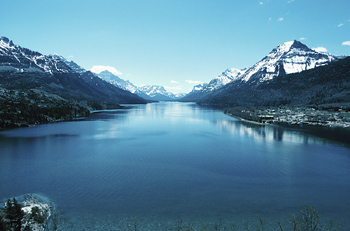

| HOME | ARTICLES | PHOTOGRAPHY | RESOURCES | DIRECTORY | SITE MAP |
Rethinking Digital Photography
Since the first digital cameras arrived, and even during the era of video cameras, I have managed to take almost every new model made into the field. I've had enough experience with these cameras to conclude that eventually, serious photographers are going to have to deal with the simple fact that in digital photography, the camera itself is the film. It's a classic (and I hate using the term) paradigm shift.
Yes, it is important to have a good lens, and there are a lot of them nowadays. Nikkors still have that extra something when compared with their imitators. But one variable that's really changed since the old days is the choice of film. You used to be able to buy Kodachrome, knowing you'd get that certain exaggerated look. There were classy black-and-white films such as Ilford. Things got hot when Fuji developed new dyes. Each kind would give you a certain quality that you wouldn't get from any other film. And while I suppose it would be possible to develop plug-ins for Photoshop that mimic the look of certain films, the basic capturing mechanism is now the CCD or CMOS chip. That's the real film. And it's not changeable. Even in postproduction, the best you can do is work with the data you're given. You can't really make new data that is true to the captured image. Anyone who has played with images from small 8-megapixel CCDs knows what some of the problems are in making these images look lively. So the camera itself has essentially become the film. This is interesting, and I began to notice it when I posted some old photos taken with a now-quaint Kodak DC-50. The pictures had a unique quality. So I pulled my Olympus E-10 out of mothballs. I had taken stunning pictures with this camera over the years. It still takes a nice shot. And it produces photos distinctly different than those made with other 4MP cameras. Another camera that still takes a great photo is the Olympus 3030. This 3MP camera takes much livelier photos than do the higher-resolution 4040 and 5050 models that came later. It took me years to realize this. Though the detail is not as good, the vibrancy is better. Much of this has to do with pixel size. The bigger the pixel, the better, which has to do with the nature of a CCD. The point is that each camera has characteristics that are as individual as brands of film had. This leads me to believe that most photographers, whether pros or hobbyists, will eventually have numerous cameras, not the one lone Nikon with the lens collection. People who know me know that I always have a pocket camera with me, and sometimes I go out to shoot seriously with a big camera. I realized that lately I've been using four cameras, and have considered using the Olympus E-10 again. I've been looking at some other "collectibles" that I might want to shoot with for the fun of it. I don't know if I'm the average digital-camera user, since I'm often reviewing these cameras and writing about them. But with an all-access pass, why would I want to break out old clunkers to shoot pictures? It's like different film, that's why. When I used film, I loved to play around with different varieties. It was interesting to see the results. High-speed film had a certain grainy quality; low-speed film was unusable in dim lighting. The film, like the cameras today, made demands on you. I am not going to get the same detail on a 3MP camera that I will on a 10MP model. But the picture can still be outstanding. I have blown up old 3MP pictures to wall size with special enhancing software that interpolates the pixels to make more of them. Even in the early days of digital photography, you'd find experts blowing up 2MP shots to 4 by 3 feet with stunning results. Once we rethink all of this, we may want to keep some of those supposedly obsolete cameras. And it may be a good time to pick up some cheap used cameras on the open market |
Copyright 2025 Portrait Photography. All rights reserved.
|
 During the heyday of film cameras, the camera was the vehicle for transmitting the image to the film. You'd buy the best lens and camera combination you could, which tended to boil down to offerings from Leica, Nikon, and maybe Canon or Pentax. Others made good cameras, but the contrast you got with a Leica or Nikon lens was always superior. Other fabled lenses appeared on bigger cameras, and everyone wanted to own a Hasselblad too. But that's all academic in today's market. Things are different.
During the heyday of film cameras, the camera was the vehicle for transmitting the image to the film. You'd buy the best lens and camera combination you could, which tended to boil down to offerings from Leica, Nikon, and maybe Canon or Pentax. Others made good cameras, but the contrast you got with a Leica or Nikon lens was always superior. Other fabled lenses appeared on bigger cameras, and everyone wanted to own a Hasselblad too. But that's all academic in today's market. Things are different.